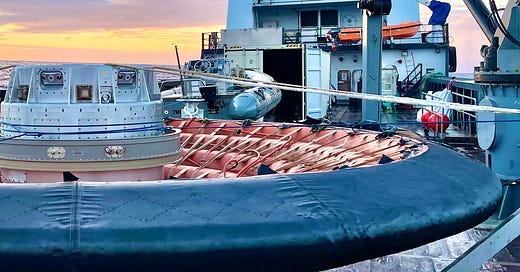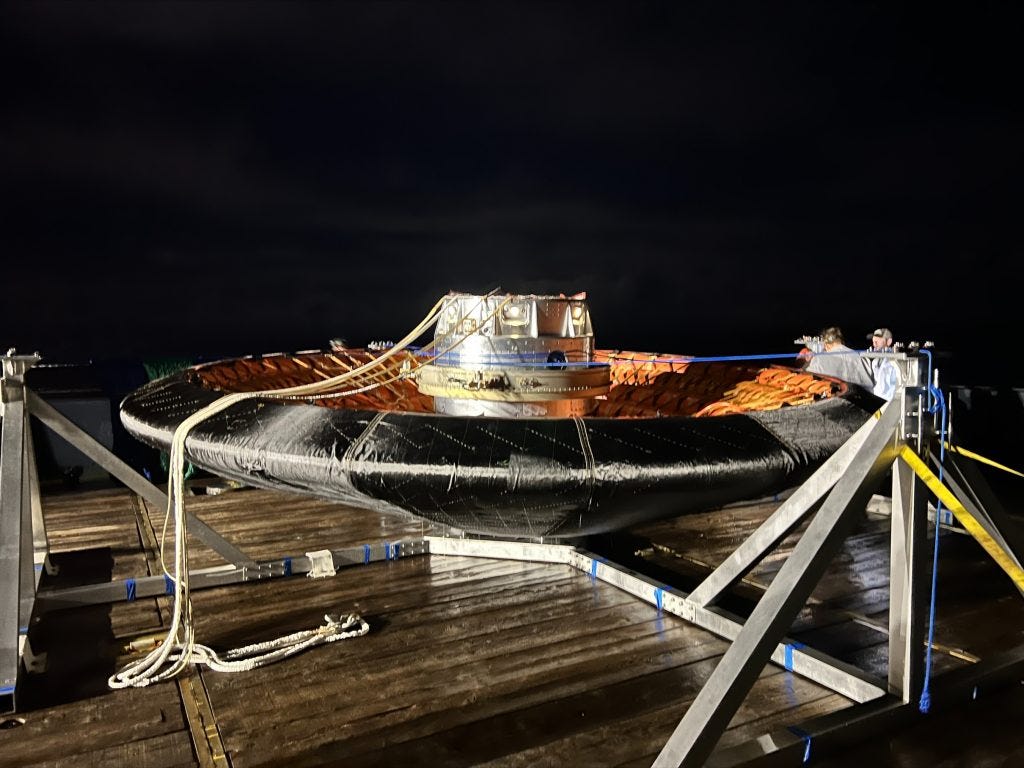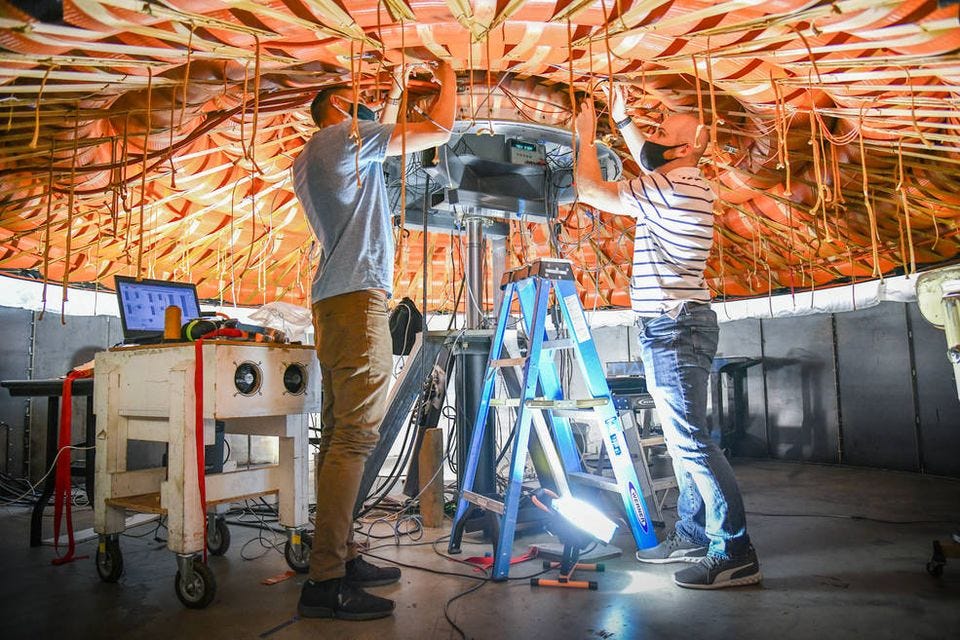A way for Amazon to deliver packages to the Moon or Mars?
NASA successfully tests technology for delivering cargo
The headline above is a bit cute, but there is a grain of truth in there that involves the man who owns a large chunk of Amazon and its delivery service. Jeff Bezos also owns a space company and wants to use his spacecraft to deliver cargo and astronauts for NASA.
While Hurricane Nicole was bearing down on Florida, a satellite was launched from the coast of California. That rocket also carried an experiment that could change the way large landings (deliveries) are made to the Moon, Mars, or even Earth.
Since the early days of the Mercury program, scientists have schooled us on the need for heat shields. A spacecraft is traveling so fast heading toward a planet or moon that, when it hits the atmosphere, the drag of the vehicle creates tremendous heat.
Something is needed to protect the vehicle from burning up. Capsules have a heat shield and the space shuttles used a series of tiles to protect the spacecraft during reentry. These shields are big, bulky, and add significant weight. What if you could instead use an inflatable heat shield that was packed into a small space?
That is exactly what NASA has just tested. Packed inside the rocket that carried a weather satellite to space was a four-foot by eighteen inch stowaway. Once the satellite was on its way into its orbit in space the stowaway was deployed. NASA released amazing pictures of the inflation of the nearly 20 foot-wide cone that acted as a heat shield as the vehicle pushed through the atmosphere. It started glowing as plasma flowed over its edges.
The mission was called LOFTID, which stands for Low-Earth Orbit Flight Test of an Inflatable Decelerator. The technology is more generally known as HIAD or Hypersonic Inflatable Aerodynamic Decelerator. NASA scientists were giddy as LOFTID deployed, protected its data-capturing module, and then safely parachuted into the ocean off Hawaii for recovery.
The NASA team is celebrating the “huge success” of this mission. LOFTID Project Manager Joe Del Corso says the aeroshell looked really clean. In fact, its underside was described as “pristine” after dealing with temperatures above 3,000 degrees.
Days after the LOFTID test flight, NASA’s biggest rocket ever sent a capsule to the Moon. Del Corso says the agency has now proved it can put “a lot of stuff” in space and bring it down safely through an atmosphere. He said the two missions “are huge steps in enabling human access and exploration. We’re going to space and we want to be able to stay there.”
This idea of an inflatable heat shield has been around for decades, but in the past 10 years materials and technology have improved to allow for the construction of a HIAD, that can withstand the heat of reentry. The larger size of the decelerator creates more drag and starts the slowing process higher in the atmosphere.
Because the inflated size is larger than the diameter of the rocket, a HIAD makes it possible to protect larger payloads. The technology could be used for returning cargo from the International Space Station or even one of the station’s modules, as well as delivering the cargo that will be needed for a Moon or Mars base.
In order to accomplish that, NASA will need to scale up the aeroshell by three or four times. LOFTID was six meters across. A HIAD to protect a capsule would need to be between 18-22 meters.
NASA spent nearly $100 million dollars on the test, that was a public-private partnership. United Launch Alliance (ULA) wants to use HIAD to make its new rocket partially reusable. ULA’s idea is that the engine section of its rocket will separate, use a HIAD to reenter the atmosphere, and then a helicopter will snag the section once it has been slowed by its parachutes. NASA did not say how much ULA contributed financially to the test.
That brings us back to the headline. ULA’s new rocket will use engines from Jeff Bezos’ Blue Origin space company. Blue Origin will likely get a close-up look at HIAD technology at work. Bezos and his company have their sights set on landing on the Moon. So, who knows, maybe Bezos will end up using this technology to deliver packages for NASA.







